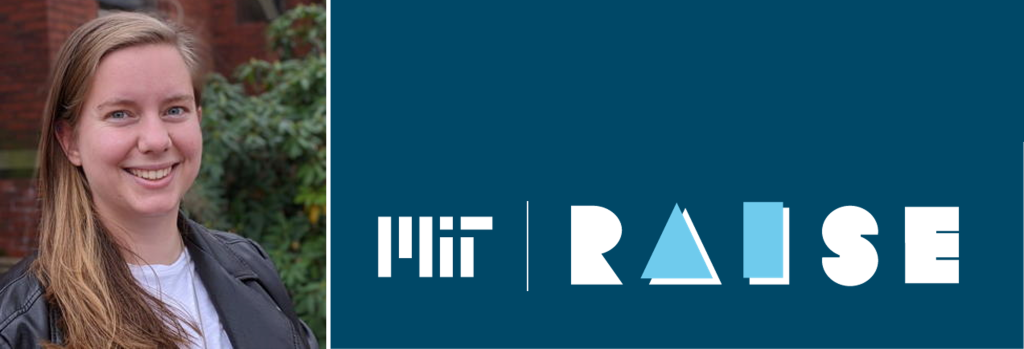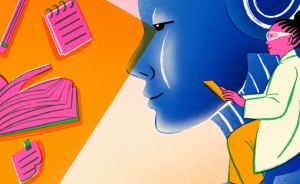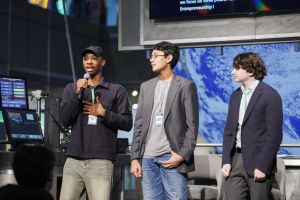
Sarah Wharton is a curriculum designer working in the Scheller Teacher Education Program (STEP) as a part of the Responsible AI for Computational Action project. Before joining MIT, she worked as a middle school computer science teacher in Cambridge, Massachusetts, where she created her own hands-on curriculum. She is particularly interested in making computer science education accessible and engaging to students who don’t yet see themselves in STEM. She holds an S.B. in Brain & Cognitive Sciences and Literature from MIT.
For starters, can you tell us a little about the Responsible AI for Computational Action (RAICA) curriculum?
RAICA is a playful, project-based AI curriculum for middle school students. Each of our modules centers on an AI technology that students explore by creating an open-ended project. In our Picture This module, students build an image classification model for a project they brainstorm: anything from a game that uses whole-body poses to an app that helps you tell recyclables from trash. In other modules, students using our curriculum have built projects ranging from a robot fish that tells you about water quality to a video game that trains itself to beat you.
AI, ChatGPT, and EdTech are the new education buzzwords. What impact do you think new technology will have in the classroom?
Technology doesn’t change classrooms; teachers do. But, crucially, the classroom doesn’t exist in a void. Use of technologies and attitudes about AI held by students, families, and communities will find their way into schools, so I encourage teachers to consider: what aspects of new technologies could actually be helpful? What tool use builds self-efficacy and encourages students to be brave, creative thinkers? And how can we shape our students to be thoughtful builders of future technology?
How is your team helping to ease technology fears not only for students, but also for educators?
So much fear about technology stems from uncertainty and lack of understanding. While we can’t predict the future with our curriculum, we can build teachers’ and students’ understanding of AI systems, making the technology less abstract and scary. Instead of feeling that AI is something that happens to them, students feel in control of how they use and shape AI. With AI literacy, we replace fear with empowerment.
What advice do you have for teachers who are already trying to fit core competencies into their curriculum when it comes to adding AI education as well?
As a teacher, you are the expert on your classroom and your students. To add in AI work, consider:
- Topical connections. Students can build AI projects that relate to topics you already discuss in class. Students could build an AI chatbot that answers questions as a famous historical figure or an image classifier that tells apart trebuchets and catapults.
- Skill connections. Often, the skills needed to build an AI project are the same as those used in other domains. Understanding datasets, processing written language, evaluating ethical considerations are all engaged when working on AI projects.
AI isn’t simply an extension of computer science. It’s a rich field that incorporates design, mathematics, ethics, data science, and more. Once you start looking, you’ll find a wide breadth of connections.
What is your favorite part of working at MIT?
MIT folks are passionate and supportive, willing to help others make amazing things. It’s the perfect place for experimenting with even the wildest ideas.




